If the white man has inflicted the wound of racism upon Black men, the cost has been that he would receive the mirror image of that wound into himself. As the master, or as a member of the dominant race, he has felt little compulsion to acknowledge it or speak of it; the more painful it has grown the more deeply he has hidden it within himself. But the wound is there, and it is a profound disorder, as great a damage in his mind as it is in his society. ―Wendell Berry, The Hidden Wound (1970)
We White Quakers like to revel in our myths about ourselves. These include “we were all abolitionists”; “we all worked on the Underground Railroad”; and “none of us were slaveholders.”
Often there are kernels of truth in myths, but the truth is more complex. Myths exist to veil the complexity and contradictions of our history, to obfuscate the differences between who we think we are and who we really are and have been. Often we want to take credit for the courageous few among us in order to absolve us from the uncomfortable reckoning with our past and our present. These myths protect our sense of innocence and goodness, but at what cost? Our failure to interrogate uncomfortable truths keeps us from living up to the promise of our faith, one that centers uncovering truth as foundational to our communal religious life.
I had a Black roommate in the early 1990s who flirted with Quakerism. She accompanied me to a Pendle Hill on-the-road program hosted by Iowa Yearly Meeting (Conservative) at the Paullina Meetinghouse in rural Iowa. At one point in the program, the White leader casually mentioned that even though it took 100 years, we were the first among religious groups to call for the abolition of slavery. Clearly when he was thinking of religious groups he was thinking only of White folks.
My friend was very quiet during the discussion in our circle, and then she started to visibly shake. She stood up and said:
How dare you so glibly speak about Quakers and slavery. As though in 100 years, there weren’t lives lost and people maimed and tortured and torn apart from their families? Why was it okay for it to take 100 years when it was so clearly violent and cruel? How many of my people were slain or brutalized in those 100 years?
We in the circle were struck silent. I had felt aligned with the program leader’s assertion, and felt a sense of misplaced pride that I was among a community enlightened so early. This moment was an example of the stark disconnection of Whiteness. The abolition of slavery was an abstract act of goodness, a certification of Quakers as “good White people.” The statement had no connection with the lived reality of those enslaved, their descendants, or the intimate daily atrocities that maintained the system. The statement had no connection to the reality of White Quakers as slaveholders and slave traders who had participated in the trading of chattel slavery: the bondage of other human beings from the 1680s until the mid-1770s in what would become the United States.
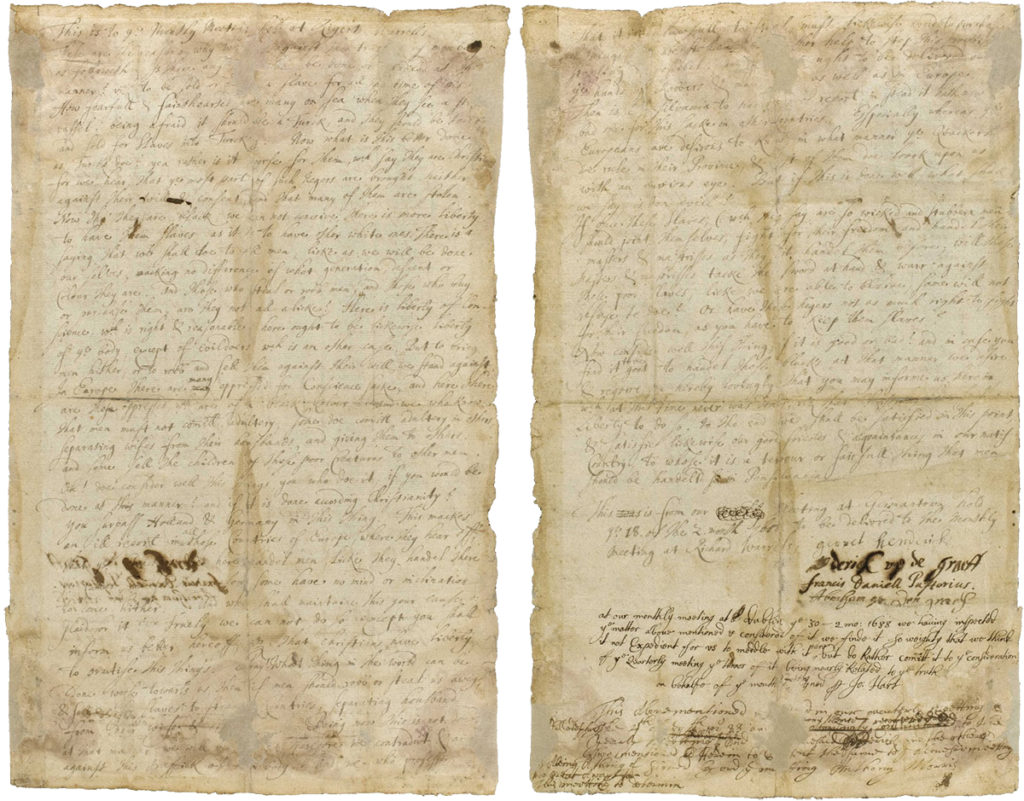
The 1688 Germantown Quaker petition against slavery. Photos taken by conservators of the original document for Germantown Meeting and found on commons.wikimedia.org. The original is held by Haverford College Quaker and Special Collections and can be viewed in high resolution on the Tricollege Libraries website.
As historian Katharine Gerbner recounts in “Slavery in the Quaker World” (FJ Sept. 2019), White Quakers were settlers in Barbados—ironically called the “nursery of truth” because of the prevalence of Quakers—before arriving in what would be called Pennsylvania. In 1675 there were thousands of Quakers living in Barbados, following after Quaker missionaries Ann Austin and Mary Fisher, who had first colonized and converted island dwellers in 1655. Only four of the Quakers who inhabited the island at that time were not slaveholders.
Quaker founder George Fox visited Barbados in 1671 and stayed on the plantation of his stepdaughter and step son-in-law, Quaker slaveholders Margaret and John Rous, until 1672. Rather than condemning slavery, Fox reassured the governor of Barbados that he would not “teach the negroes to rebel.” According to research presented by Quaker historian J. William Frost in his work “George Fox’s Ambiguous Anti-slavery Legacy,” Fox instead suggested that White Quakers preach Christ to those they enslaved and “deal mildly and gently” with them. The Quaker version of “mild and gentle” slavery was White Quakers’ way to justify their cruelty, to be “better” slaveholders.
When Pennsylvania was founded in 1682, William Penn and other White Quakers used their connections to Barbados to purchase enslaved Africans. Though records are spotty, in their 1991 book Freedom by Degrees, historians Gary B. Nash and Jean R. Soderlund determined that Penn enslaved at least 12 people on his Pennsbury Manor estate in Morrisville, Pennsylvania. Penn said he found enslaved people “more dependable” than indentured servants. He allowed those he kept in captivity to marry, but when Parthenia (the wife of Jack, a man Penn had enslaved) wanted to say goodbye before being sent by her enslaver to Barbados, Penn’s wife, Hannah, only permitted it after the couple had washed the Penn family’s laundry and Parthenia had brought her some goods. Penn freed some of those he’d enslaved, and others he did not. He did not say why. Clearly William and Hannah Penn were not unique among their White Quaker peers in their practices. There is no “mild and gentle” slavery.
As White Quakers we take credit for signing on to the 1688 Germantown Declaration, the first recorded document in North America to denounce slavery. But when historian Gerbner looked more closely, she noticed an addendum, a note:
We having inspected ye matter, above mentioned, and considered of it, we find it so weighty that we think it not expedient for us to meddle with it here. A Paper being here presented by some German Friends Concerning the Lawfullness and Unlawfulness of Buying and keeping Negroes, It was adjudged not to be so proper for this Meeting to give a Positive Judgment in the Case, It have so General a Relation to many other P[a]rts, and therefore at present they forbear It.
Though we take credit for having signed on to this early document, the White Friends who represented Dublin (now Abington) Meeting and Philadelphia Yearly Meeting rejected the protest.
It is clear that slavery had “so general a relation to many other parts” and that White Quakers were complicit in deep ways, not only directly with slaveholding and slave trading but with these other “parts.” Colonialism, White supremacy, and capitalism create a web of oppression, and to abolish and transform one part creates the conditions and necessity of addressing all that is built from and tied to that one practice. John Woolman clearly understood this web and the need to create other pathways of living in order to create the conditions for justice, and arising from it, peace.
Perhaps the revolutionary Quaker faith we imagine ourselves to inhabit has never really existed, and if we tell the whole truth and commit to the healing the truth-telling calls us to, perhaps together we can embody and create the prophetic religion we thirst for.
The myths we tell ourselves and the lies those myths uphold are embedded in our contemporary faith practice. When we believe and perpetuate falsehoods about ourselves, it not only disconnects us from the truth, it also limits our ability to act with full integrity today. Telling the truth about ourselves and our White Quaker ancestors grounds us in reality, in a sense of the complexity of our identity. It allows us to create a different future, not built from delusion and half of the story but from an honest and grounded reckoning with who we are and who we have been. My friend Mila Hamilton calls this “intergenerational transformative justice.” As we deal with the uncomfortable truths of our White Quaker ancestors, we release them from the amber in which our myths have captured them. As we allow them to become the full, flawed humans they were, we also free ourselves to reckon with our present, which arises from their past, and to tell the full truth of who we are.
Perhaps the revolutionary Quaker faith we imagine ourselves to inhabit has never really existed, and if we tell the whole truth and commit to the healing the truth-telling calls us to, perhaps together we can embody and create the prophetic religion we thirst for.
I understand looking at these truths is hard: I have early colonists and slaveholders in my family, and looking at the truth of who they were is deeply troubling. But I honor them by doing so; I honor who I and my son might become, arising from the simple, human truth of who they/we are and the harm we/they have perpetrated. We all might want to identify with Benjamin Lay or Lucretia Mott, both of whom were marginalized or thrown out of the Religious Society, but they were courageous despite their White Quaker kin, fully living into, despite rebuke, their understanding of Quaker tenets and principles.
I tell the stories of early Quaker relationships to slavery because slavery was never really abolished. If we can reckon with the full truth of our connection to slavery and its afterlives, perhaps we can begin the healing necessary to fulfill the promise of the Religious Society of Friends of Truth. Perhaps we, working alongside those most directly impacted and so many others, can finish the unfinished work of abolition.
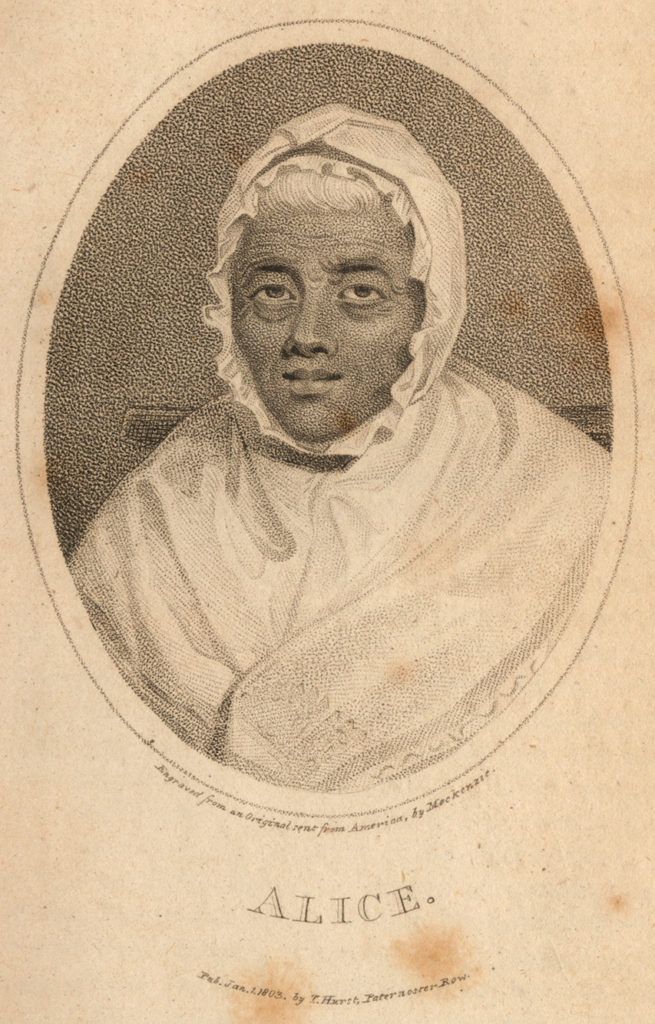
1803 portrait of Black Alice, aka Alice of Dunk’s Ferry, whose parents arrived from Barbados in 1684 on the Isabella, the first slave ship to reach Philadelphia, Pa. By age five, Alice began serving in a tavern and lighting pipes for its patrons, including William Penn. Image courtesy of Library Company of Philadelphia.
That includes working to abolish incarceration—one major afterlife of slavery. The Thirteenth Amendment abolished slavery “except as a punishment for crime whereof the party shall have been duly convicted.” This clause opened the door for the continued criminalization and confinement of those previously caged as human chattel. Quakers have been involved in prison reform from our origin. Our faith emerged in large part as a protest against state religion, and jails were filled with Quakers in England in early years as a consequence.
Prisons, as an institution currently conceived, are relatively new. In 1790 the Philadelphia Society for Alleviating the Miseries of Public Prisons (which later became the Pennsylvania Prison Society and still exists today) founded the Walnut Street Jail in Philadelphia. Half of the membership of the Society were Quakers, the rest being Protestants; the organization was headed by Anglican Bishop William White and others of the Philadelphia elite, including Benjamin Rush and Benjamin Franklin. They were trying to address overcrowding and abusive prison practices. They were trying to do something “good.”
It was with this jail that solitary confinement was invented. The theory was that the incarcerated person would be locked up alone to reflect on their wrongdoing and become “penitent” as a pathway toward rehabilitation. In the same model, Eastern State Penitentiary opened in 1829, also in Philadelphia, confining all prisoners to solitary cells for the duration of their sentences. Charles Dickens visited Eastern State in its early days, and concluded:
The system here, is rigid, strict, and hopeless solitary confinement. I believe it, in its effects, to be cruel and wrong. . . . I hold this slow and daily tampering with the mysteries of the brain, to be immeasurably worse than any torture of the body.
This penitentiary model created the monster that has proliferated and grown into the largest prison system in the world, currently holding in captivity over 2.1 million people. Investing in the creation of a seemingly more palatable, “more mild and gentle” system in the end doubled down on reinforcing a solution that is foundationally cruel, and that perpetuates itself, like slavery did. It continues to offer abuse and punishment rather than healing and justice.
Abolition of slavery and its afterlives arises from a sense that the system of policing, prisons, and detention, including U.S. Immigration and Customs Enforcement (ICE) and U.S. Customs and Border Protection, is corrupt at its root: we cannot reform or tweak our way to a better system. The story of the Walnut Street Jail and Eastern State Penitentiary, both arising from Quaker and Protestant efforts to ameliorate suffering, demonstrates the dangers of innovating on systems and methodologies that foundationally dehumanize; criminalize; and do not offer justice and healing for victims, or true transformation for those who cause harm.
Abolitionist thinking is holistic—that ending the system of punishment and incarcerating control itself is necessary—and invites us to imagine a whole new way of not only dealing with harm but of how we think of ourselves in community. It provokes questions like, what does true justice look like? What does it mean to center healing and transforming relationships and create community safety from authentic accountability and relational reconnection? Abolition does not minimize the reality of harm or violence but rather invites us to consider a way of doing things that interrupts cycles of harm, violence, and trauma, and restores perpetrators and victims into community and their humanity.
I believe that a plant’s potential lies in its seed. Prisons, like policing, are born of the seed of chattel slavery, and no amount of striving to make these institutions more mild and gentle will achieve more justice or will create a system that moves from harm to healing. We currently live in a model of justice based on punishment, not healing. It infuses our thinking, our schools, the way we parent, and even how we think of other people, as bodies to control or contain rather than spirits to support in becoming whole.
I have seen powerful Quaker experiments with other ways of living. Certainly there are bold laboratories in our homes, in our meetings, and in our communities. I have met participants in programs such as Friends Peace Teams’s Healing and Rebuilding Our Communities (HROC) in the African Great Lakes region and seen what depth of healing can happen with access to trauma healing and support for transformation. In 2012 when I visited a peace village in Bujumbura, Burundi, I heard the testimony of former combatants and victims of the 1994 Hutu-Tutsi war and Rwandan genocide, and how they had experienced healing. Janine, a pregnant woman who shone with confidence, said:
We are healed and healing others. After the [HROC] workshop, I felt I can tell the truth to others in conflict; some of our enemies are now friends. Some are surprised by our change. Our change changes them; if they are behaving badly, I can help them.
Early Friends understood the Inner Light not only as a beacon shining from each person’s soul but also as a searchlight exposing the knots and blocked or wounded places in ourselves, the spaces requiring reckoning and real repair. I would argue that these stories of White Quaker complicity (which do not in any way diminish the stories of individual and collective Quaker courage) implicate us in the harms of slavery and incarceration in deep ways. They implicate us as perpetrators but also as wounded ourselves.
As Wendell Berry so eloquently put it, we carry the mirror image of the harm we’ve caused in our souls. This “hidden wound” is ever present and disrupts our ability to be fully intact, fully grounded, and human. We render ourselves in some ways obscure to our own history and to a full knowing of who we are.
I tell the stories of early White Quaker relationships to slavery because slavery was never really abolished. If we can reckon with the full truth of our connection to slavery and its afterlives, perhaps we can begin the healing necessary to fulfill the promise of the Religious Society of Friends of Truth.
We as White Quakers like to think of ourselves as ahead or better than dominant culture, but we have been complicit in a system and mindset that are ubiquitous. Claiming the full truth of our history and committing to repair the harms done are deeply spiritual acts of healing our own wounds of disconnection. I would argue it is the pathway upon which we can, perhaps for the first time, discover and invigorate our faith with its full promise.
What would it mean for us to take seriously and collectively as a Religious Society a call to finish the work of abolition, hand in hand and side by side with those affected and their loved ones? What would it mean for us to stand fully with the calls to abolish the police and fully fund community needs instead? What would it mean to reckon with our past complicity with harm and fully dedicate ourselves to the creation of a liberating Quaker faith that commits to build the revolutionary and healing faith we long to see come to fruition? What would it look like to finally and fully abolish slavery?
Correction: The author and FJ editors realize that an earlier version of this article inadvertently erased BIPOC (Black, Indigenous and people of color) Quakers in describing Quakers as though we were/are all White. Certainly there have been Black Friends and Friends of Color in our body from our earliest history. We apologize for this error. This online article has been updated accordingly. We have also clarified the relationship of George Fox with Margaret and John Rous.


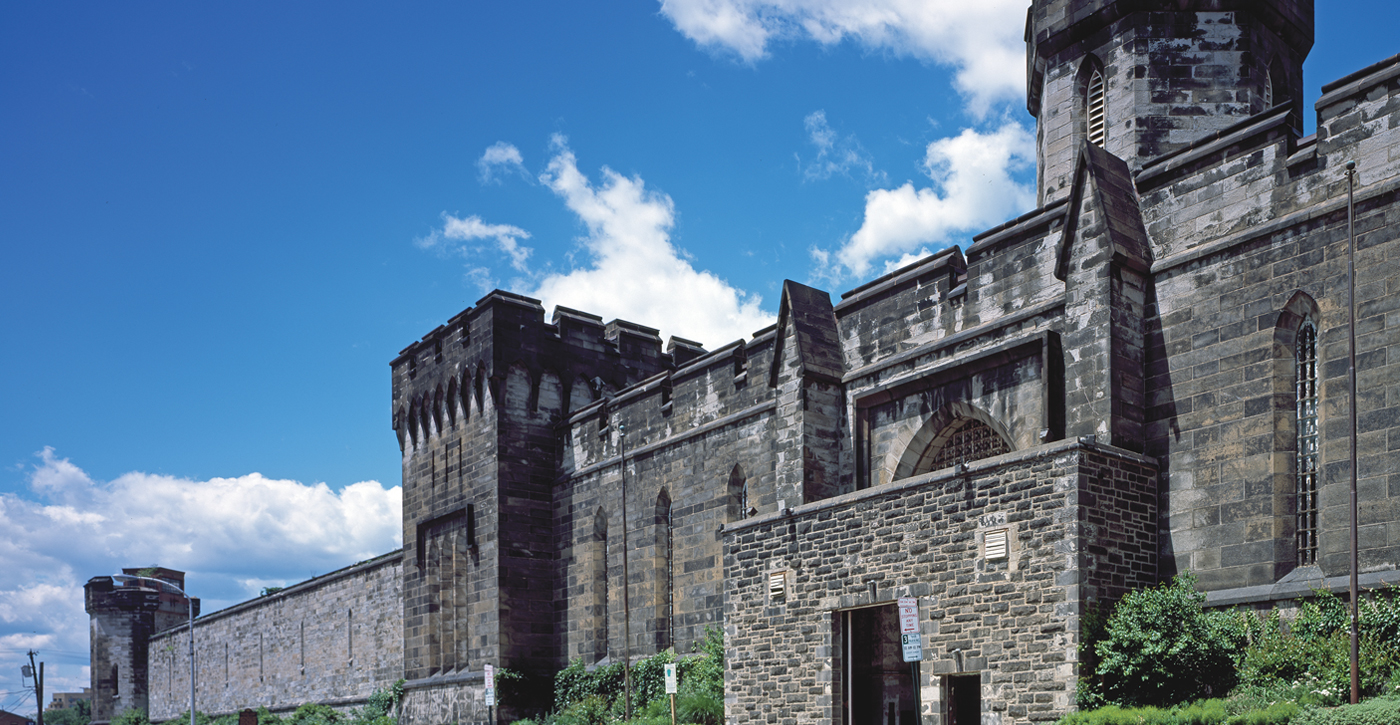
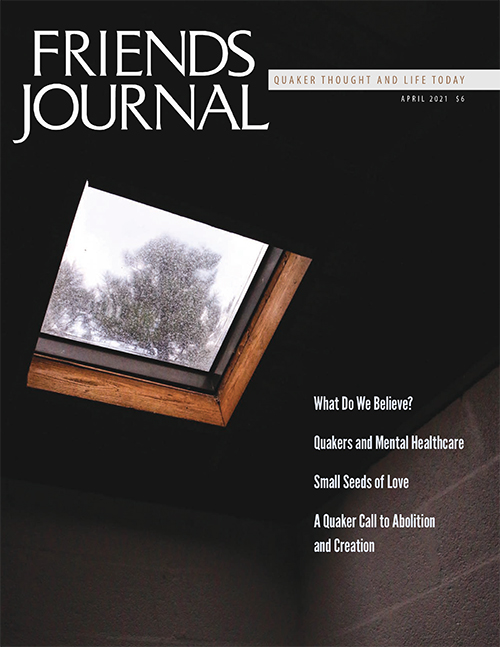

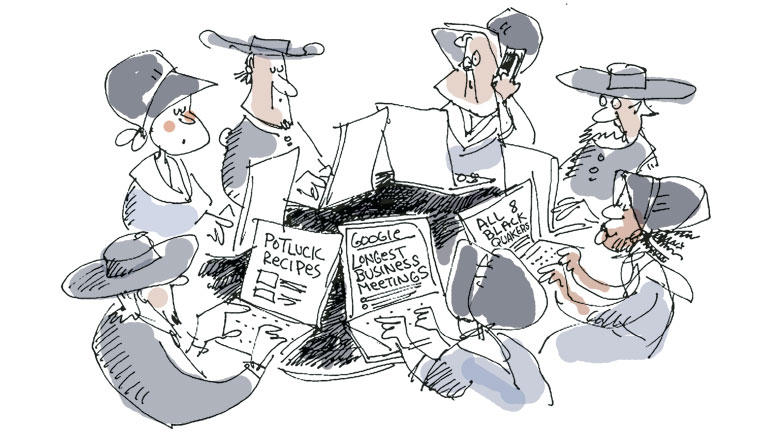
Bravo Lucy Duncan, you have opened my eyes and my heart to a whole new reckoning addressing the issue of the 100 years moratorium on Quaker action against slavery.
Thanks so much, Jules! Appreciate your thought. I think there were definitely individual actions and prophetic ones at that in the midst of that 100 years, and yes, why did it have to take so long?
Excellent and compelling article Lucy! I think that every individual, group and institution should open themselves to such queries. As it is said, “those who live in glass houses should not throw rocks.” BTW, I have a documentary out that you may not be familiar which touches upon some of the same issues you alluded to. Entitled “Elder Voices:Stories for These Times,” the theme it echoes is that those who don’t learn from history, are doomed to repeat it. The film features several residents from Medford Leas who grew up during the time of the Great Depression and World War II. Please let me know should you like to screen it.
Thanks, David!
Thank you, Lucy, for helping us open our own closet and examine the skeletons we have been hiding for so many self-righteous years.
Thanks, John, appreciate your comment SO much! Yes, our self-righteousness has not helped us see clearly. That’s true for me personally often, when I think I am enlightened, is when it’s clear I have more to learn!
Lucy
Lucy,
You have written the piece I have been wanting to write for several years now. Only, you did it way better than I would have. THANK YOU. I intend to share this article widely, to require everyone in my department to read it, and to use it with my students. I am hopeful that this piece will be an important contribution to our shared work to get Quakerism to transform itself. Thank you, thank you, thank you.
Tom
Thanks, Tom, that means so much to me!! Appreciate you!
Lucy
A comment on the correction: There may have been people of color who attended meeting for worship from the earliest years — though we have little documentation of it. Fox’s epistles and other advices said white Quaker masters should take their enslaved people to meeting “when convenient,” though it seems often honored in the breach, and one wonders whether enslaved Blacks were eager to attend the master’s worship service. There were likely some, enslaved, indentured and free, who did attend. But the earliest known person of color in membership seems to be Pink Harris, an enslaved Black woman who was accepted into Providence (RI) meeting in 1780 (with the consent of her master, a non-Friend who later freed her). Henry Cadbury researched decades ago and didn’t find any earlier. I’d be interested in knowing if anyone has evidence of earlier memberships. The situation is quite different after 1800 and especially since the 1930s.
Thanks, Betsy, so helpful to know!
The first ten years of my working life as an adult was devoted to building restorative justice programs as alternatives to incarceration. By the end of that phase of my life, it was clear that, no matter how much good we had done for hundreds of individual crime victims and offenders (and a lot of good was done), the aggregate effect was to have dramatically increased the number of persons under criminal justice supervision, while incarceration rates skyrocketed nationwide. We did the right thing and got the wrong result.
In light of that experience, this article is to me a lesson on how human-conceived social engineering can go horribly wrong, no matter how well intended and planned. Prohibition, and work with Native Americans are other examples of what seemed to be obvious Quaker-promoted solutions to social problems went horribly wrong. Looking backwards, it’s easy to see why, but why wasn’t it obvious at the time?
The lesson of these mistakes is not to stop trying to improve social conditions, but to be humble and not self-righteous about our efforts. We have our own blind spots and may make things worse.
This is not an argument that we shouldn’t support social innovation and reform, even radical, revolutionary change. Of course we must. It is an argument that our advocacy be a witness to the Inward Teacher whose direction we purport to be following, made with humility, faithfulness, and courage.
Thanks, Paul, for this reflection, deeply appreciated!
As usual, an informative and beautifully written piece. Thank you, Lucy, this is very timely given that I have recently seen the weaponization of Quaker heritage as a defense against confronting white supremacy and racism. I am thinking about how having grown up in a slave-holding household impacted Penn’s children. I had read that it was Penn’s sons who had the most dishonest and underhanded dealings with the Lenni-Lenape. It is easy to imagine that the sons’ acceptance of slavery allowed them to justify those actions.
Interesting take, yes we teach with how we live not just our words! Appreciate your comments, Hannah!
Learning how to be an anti racist is hard, especially if you already have a sensitivity to systemic racism. Acting and responding in a non self righteous manner can be very hard. I find the harder I work, my attitude about myself changes. I have to constantly remind myself that it is a process and what we want to see is growth in everyone’s awareness of when systemic racism impacts their decisions. I know individuals have to grow for system or process changes to happen. How to identify when and where you can have an impact is hard. I am not afraid to be confrontative but would like to focus on gentle persuasion. That means. As I go through my day I have to be sensitive to systemic racism, but also focus on how best to impact my decisions and the decisions of others. I can only do this with the help of the Light within.
Antiracism need not be hard if we are practiced in being honest and kind, and do not worry about being nice. We need to grow our capacity to ‘take’ the pushback, stay in the conversation, stay in relationship. Of course, a relationship implies more than one person. How others respond has to be their issue, not mine. I have a (now grown) mixed race son and daughter who have suffered from the lack of antiracism as a core belief and practice of Friends. Change is hard. Reminding myself in every decision and choice is something I’ve practiced for a long time; and it is easier when I remember: Antiracism is about equity. IF Friends had practiced antiracism consistently when my children were young, in the 1970s and 1980s, we would be a different religious society of Friends today. And they might be more involved in communities of Friends.